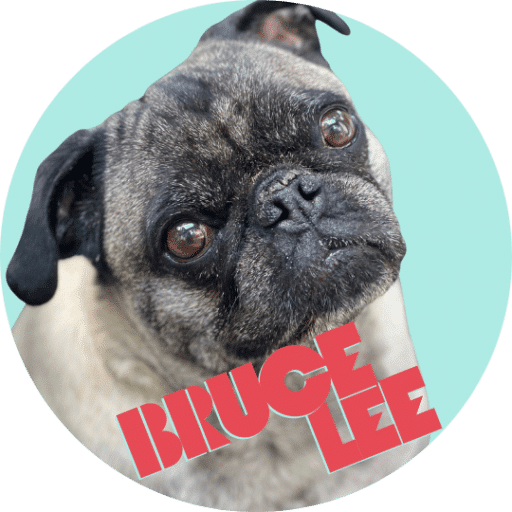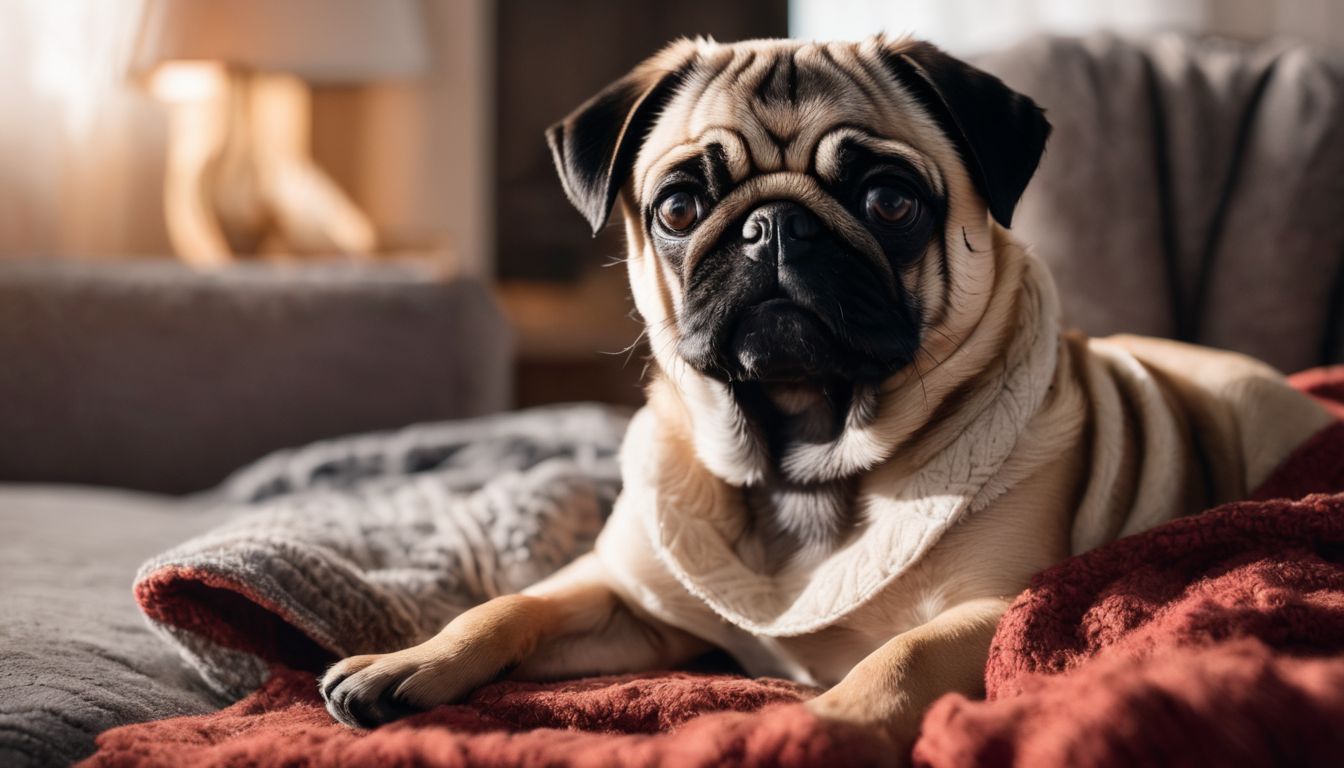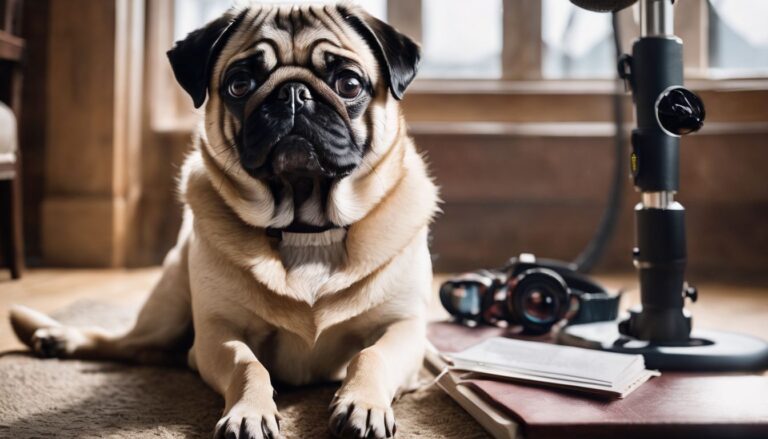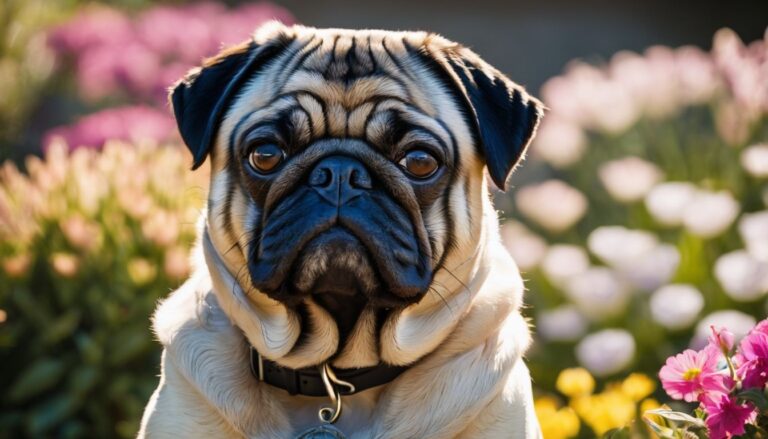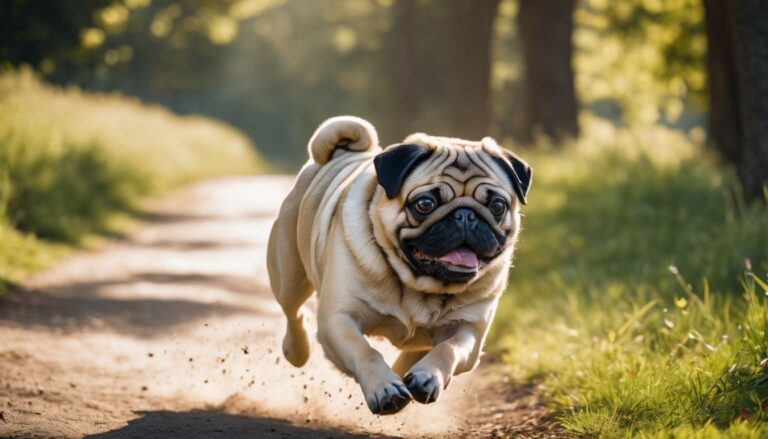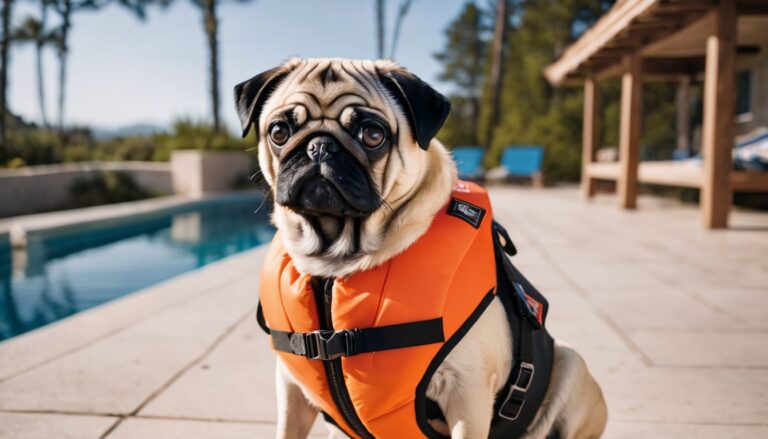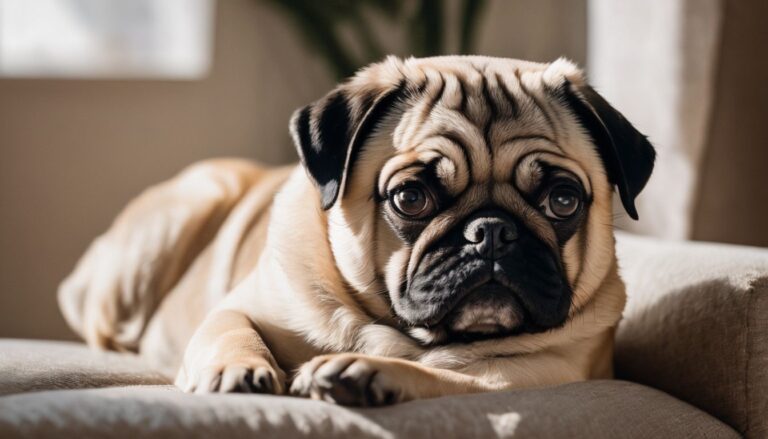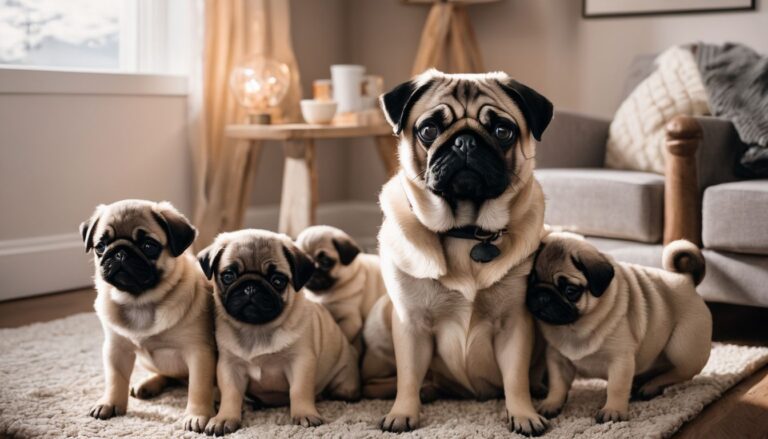Do Pugs Bite? Understanding The Bite Force And Temperament Of Pugs
Do Pugs Bite?
Pug aficionados often find themselves pondering whether their snug little pals have a penchant for using their chompers more than we’d like. We’ve all caught ourselves decoding the playful nips of our four-legged friends out of concern and curiosity.
To put your minds at ease, my research has uncovered that Pugs generally pack a bite with less umpf — usually under 200 PSI to be precise. In this deep dive, we’re going to peel back the layers on those heart-melting yet occasionally overzealous pug nibbles.
You’ll gain insights not just into their biting tendencies but also pick up some savvy training tips to gently discourage any unwelcome munches. Let’s embark on this journey together so you can relish every moment with your pug in pure bliss!
Key Takeaways
- Pugs have a bite force less than 200 PSI, which is weaker compared to many other breeds, making their bites less powerful.
- Biting in pugs often comes from a place of playfulness or exploration rather than aggression. Consistent training and early socialization can help prevent biting habits.
- Providing chew toys, cold treats during teething times, and regular dental checks are important for a teething pug’s comfort and oral health.
- To address biting behaviors in pugs, identify the cause of nibbling, use positive reinforcement techniques for good behavior, and set clear boundaries with consistent commands.
- Pug owners should be aware that rough play might encourage biting; fostering calm interactions and avoiding situations that stress the dog will minimize these tendencies.
Understanding Pug Behavior
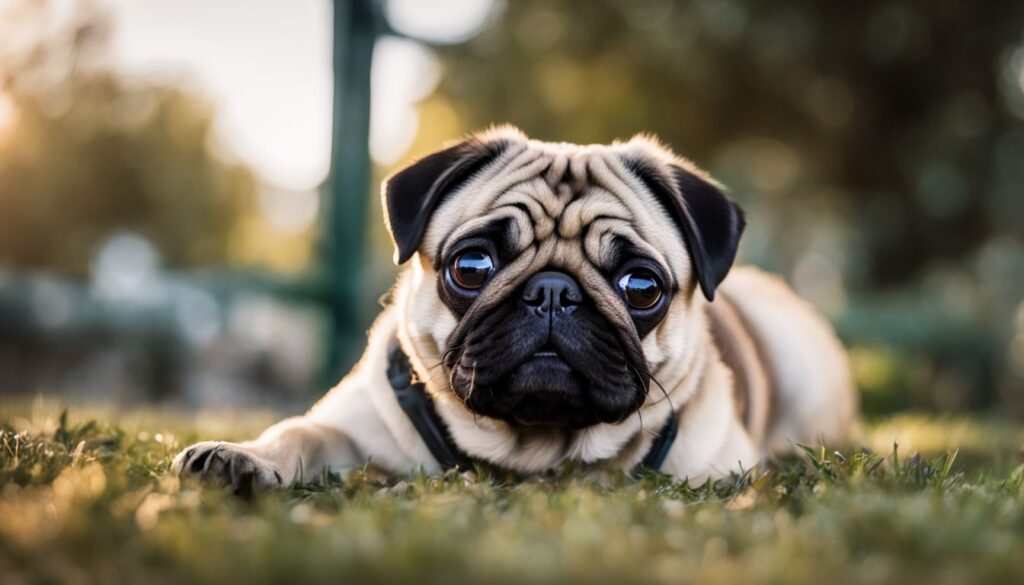
In delving into the world of pugs, it’s crucial to recognize their unique behavioral patterns and how these can influence their interactions, including biting. Let’s explore the intricate nature of a pug’s temperament so we can better understand what prompts them to use their teeth in certain situations.
Pug jaw dynamics and anatomy
Pug jaws pack more cuteness than punch, thanks to their distinct anatomy. Their short, blunt muzzles and slightly protruding lower teeth—a classic underbite—define their charming expressions.
These features play a big role in the breed’s weak bite force, generally falling below 200 PSI. It means that while pugs can be nippy during play or when they communicate with gentle bites, they’re not known for delivering powerful bites like some larger breeds.
We often see our furry companions nibbling or giving soft nips as part of their way to bond or seek attention. The structure of a pug’s jaw combined with their easygoing personality makes it so these behaviors rarely stem from aggression.
They are less likely to bite out of anger; instead, these interactions typically come from a place of affection or curiosity. For us lovers and owners desiring safe interactions and understanding our pets’ behavior, knowing about the pug’s gentle bite helps provide peace of mind and reassurance on what to expect from this beloved breed.
Comparing bite force with other breeds
When considering our beloved Pugs against other breeds, it’s crucial to understand how their bite force stacks up. Notably, Pug jaws are designed differently—lacking the power seen in larger, more muscular breeds.
Here’s a comparative look at the bite force of Pugs relative to other popular dog breeds:
| Breed | Average Bite Force (PSI) |
|---|---|
| Pug | Under 200 PSI |
| Labrador Retriever | Approximately 230 PSI |
| German Shepherd | 238 PSI |
| Rottweiler | 328 PSI |
| Mastiff | 552 PSI |
| Kangal | 743 PSI |
From this table, we can see that Pugs possess a considerably weaker bite force than many other breeds, aligning with their non-aggressive disposition. While their adorable faces and friendly personalities win our hearts, these physical attributes influence their potential for biting. Understanding this helps us appreciate our gentle companions even more.
Do pugs’ bites hurt?
Pugs might look small and cute, but like any dog, they have teeth and can bite. However, their bite force is considerably weaker than that of larger breeds; typically it measures below 200 pounds per square inch (PSI).
This means that while a pug’s bite can be startling, it’s unlikely to cause serious harm. Their short muzzles and slight underbites just aren’t designed for powerful biting.
We’ve found that most pugs tend to nibble or ‘mouth’ rather than bite with aggressive intent. They use this behavior as a way to communicate or interact with their owners, not to hurt them. In our case, Bruce Lee is extremely gentle with us, even when giving him treats.
Still, it’s essential for us as responsible pet carers to teach our pugs proper bite inhibition from an early age. Training ensures these interactions remain gentle and pain-free – both for the playful pup and its human friends!
Pug Bite Tendencies
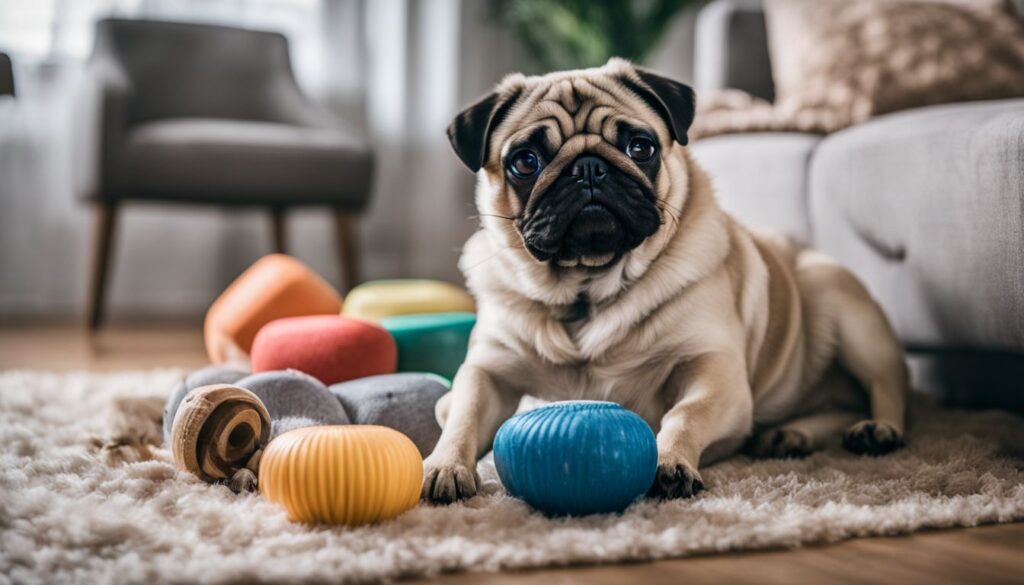
Pug bite tendencies can be surprising to some, given their generally docile nature. Recognizing the reasons pugs might feel compelled to use their teeth is key to ensuring harmony and safety for both the dogs and their owners.
Causes for biting
Pugs might start nibbling for several reasons, and it’s often their way of expressing a need or emotion. If they’re teething, those little gums get sore, and biting on things provides some relief.
Just like us, when pugs feel anxious or stressed, they may turn to biting as a coping mechanism. Think of it like using dog toys to chew away the tension.
Sometimes our furry friends use their mouths to explore the world around them or play with other canines and people. It’s important not just for pug owners but also for anyone considering pet sitting this breed to understand that seemingly aggressive behavior is often just playful communication.
We make sure any signs of discomfort from these bites are addressed immediately; after all, we want everyone safe and happy around these lovable pups!
Minimizing risks
Minimizing the risks of pug biting is key to maintaining a happy and safe environment for everyone. A bite from a pug may not be as forceful as other breeds, but it’s important to prevent any negative behavior early on.
- Train consistently using positive reinforcement methods. Reward good behavior with treats, praise, or playtime to reinforce gentle conduct.
- Provide plenty of chew toys for your pug during teething periods. This diverts their attention away from biting hands or furniture.
- Socialize your pet from an early age with both people and other dogs to reduce anxiety and fear-based reactions.
- Educate children on how to interact with your pug properly; gentle touches and no sudden grabbing can help prevent defensive nipping.
- Establish yourself as the pack leader through confident commands and body language that communicates authority without intimidation.
- Avoid rough play that encourages aggressive behavior. Keep interactions calm and controlled to foster a relaxed atmosphere around your pet.
- Create routines for feeding, walking, and playing that cater to your pug’s needs, reducing stress-related biting incidents.
- Consult a professional dog trainer if you notice persistent biting issues. They can offer specialized advice tailored to your pug’s personality.
- Monitor the signs of discomfort or illness in your pet, as pain can sometimes cause even the friendliest dog to snap unexpectedly.
Training to Stop Pug Biting
Training to stop pug biting is a crucial part of puppy training that fosters a safe and harmonious home. By implementing consistent behavioral techniques, we can guide our pugs towards a gentler demeanor, ensuring that the playful nips never escalate into harmful bites.
Nurturing a nip-free environment
Creating a nip-free environment for our pugs is essential for both their well-being and ours. As we aim to foster a peaceful home, it’s important to understand how to guide our furry friends away from using their teeth inappropriately. Here’s how we can make sure our pug puppies grow up without developing a biting habit:
- Provide plenty of chew toys that cater to your pug’s teething needs; this redirects their tendency to nibble on things they shouldn’t.
- Engage in regular play sessions using toys instead of hands or feet, establishing that these are not for biting.
- Use positive reinforcement techniques, such as clicker training or treats, to reward good behavior and discourage nipping.
- Implement a consistent routine for your pug that includes ample exercise to help burn off excess energy that might otherwise be directed into biting.
- Socialize your pug from a young age with other dogs and people to teach them proper interaction and reduce the urge to bite out of fear or anxiety.
- Address any signs of aggression early by consulting with a professional dog trainer or behaviorist who specializes in puppy training.
- Set clear boundaries for your pug; if they start to bite, calmly redirect them to an appropriate activity or toy and praise them when they switch focus.
- Avoid games that encourage tugging or rough play, which can increase the likelihood of biting occurrences with your pug.
- Monitor interactions between children and your pug closely, teaching kids the importance of gentle play to establish respectful relationships between pets and family members.
- Keep track of instances when your pug might nip, noting what triggers these behaviors so you can work on specific training strategies tailored to prevent future biting.
Tips for teething pugs
Teething pugs need our care to stay comfortable. Here’s how we can help them through this natural but sometimes challenging phase.
- Introduce chew toys: Chew toys can soothe sore gums and keep your pug engaged. Look for durable options suitable for small breeds.
- Provide cold treats: Frozen carrots or special dog-safe ice treats can provide relief from gum discomfort.
- Maintain regular dental checks: Even as puppies, pugs benefit from having their teeth examined to ensure they’re developing correctly.
- Use a gentle touch: When playing with a teething pug, be gentle to avoid adding pressure on their sensitive gums.
- Keep valuables out of reach: Puppies explore the world with their mouths, so remove shoes, wires, and other tempting items from your curious pug’s path.
- Establish a routine: Consistency helps teething pugs feel secure; stick to regular feeding times and create a calm environment.
The Protective Instinct in Pugs
Pugs may be small, but they carry a big heart, often revealing a protective streak when their family or territory is perceived to be under threat. Understanding this instinctual behavior can prevent misunderstandings and ensure harmonious living with these affectionate companions.
Unveiling potential triggers
Understanding what makes a pug feel threatened or uncomfortable is essential. We want to ensure our furry friends remain happy and bite-free.
- Loud noises and chaotic environments can overwhelm pugs, leading them to snap out of fear or anxiety.
- Unfamiliar people or animals entering their space may trigger a defensive reaction.
- Sudden movements can startle pugs, causing them to nip as an instinctive response.
- Painful conditions or illness might result in a pug biting to communicate discomfort or seek relief.
- Children playing too roughly with a pug may provoke the dog into using its teeth as a warning.
- Taking away food or toys could cause resource guarding behavior, where a pug bites to protect its possessions.
- Encroachment on their resting area makes some pugs feel the need to defend their territory with a bite.
- Teething pains in young pups often lead them to chew and bite objects, including hands and fingers.
Tales from pug owners
Pug lovers often share heartwarming stories about their pint-sized companions. Many recall how their pugs have a quirky way of using their mouths to explore the world, rather than for aggressive biting.
Whether it’s gently nibbling on a favorite toy or softly ‘booping’ their human’s hand for attention, these gestures showcase the breed’s affectionate nature.
We hear countless tales where pugs turn into little shadow-followers, demonstrating loyalty by staying close but seldom displaying any real biting behavior. Owners laugh when describing how even during playtime, those cute wrinkly faces struggle to exert any force – it’s all in good fun with minimal risk.
Their strong bond with humans shines through in every gentle interaction and tells us more about this lovable breed’s true temperament than any bite force measurement ever could.
How to Stop Pug Biting Once and For All
If you’re determined to tackle your pug’s biting habits, it’s essential to understand that consistency and patience are key. We’ll delve into proven strategies that can help redirect those nips and turn your furry friend into the gentle companion you know they can be.
Addressing biting behavior
Addressing biting behavior in our pugs is essential for a happy coexistence. It helps us foster a loving relationship where our furry friends understand boundaries and behave appropriately.
- Identify the root cause of biting. Pugs might nibble for various reasons such as fear, excitement, or even due to lack of training.
- Keep interactions positive. Always use a cheerful tone and rewarding approach when your pug follows commands and manages to curb their biting instinct.
- Offer suitable chew toys. These can be an excellent outlet for your pug’s natural chewing tendencies, especially during teething phases.
- Engage in regular playtime. Play sessions help burn off excess energy that might otherwise lead to nipping or biting out of boredom.
- Set clear boundaries. Teach your pug from an early age what is acceptable behavior and what isn’t by using consistent commands and reactions.
- Use a firm “no” when necessary. If your pug bites, respond with a calm but firm command to signal that this behavior is not okay.
- Seek professional training help if needed. Sometimes, an expert can offer tailored advice and techniques to address persistent biting issues.
Importance of early training
Tackling biting habits head-on, we know that shaping a Pug’s behavior starts best when they’re young. Early training is vital for these affectionate dogs to learn the difference between acceptable play and behavior that could lead to a dog bite.
By establishing clear boundaries from puppyhood, pugs can understand how to interact with humans and other animals in a safe, loving way.
We also guide our little companions through socialization at an early stage. Introducing them to new people, pets, and environments helps prevent fear-based reactions like nipping or biting.
With consistent positive reinforcement techniques, Pugs quickly pick up on what pleases their owners and thrive on being the delightful companions we adore so much.
Do Pugs Bite – Continued
In our journey to understand the bite behavior of pugs, we often encounter common questions that many pug owners share. We’ll dive into these frequently asked queries to offer clarity and peace of mind for those experiencing concerns with their furry companions.
Do pugs bite their owners?
Pugs exhibit a great deal of affection towards their owners and are not typically known for aggressive behavior. Their bite force is relatively weak, with measurements well below 200 PSI, which means even when they do happen to nip or bite, it doesn’t usually result in serious harm.
These small dogs express themselves with gentle nibbles and soft nips that serve more as communication than aggression. They bond closely with their families, preferring cuddles over confrontations.
It’s important to interpret a pug’s body language accurately; what might seem like biting out of malice could simply be playful mouthing or an overly excited response during playtime.
To ensure this doesn’t develop into a habit, early training plays a crucial role. Next, we explore how nurturing a nip-free environment contributes to raising a well-behaved pug.
Can pugs be kept outside?
Many people wonder if it’s safe and comfortable for pugs to live outdoors. Given their unique physical characteristics, particularly the short muzzle, pugs can have difficulty regulating their temperature effectively.
This makes them vulnerable to extreme weather conditions such as intense heat or freezing temperatures. Therefore, keeping a pug outside on a permanent basis is not recommended.
We love our pugs for their excellent companionship and loyalty; they thrive best when they are close to their families. Pugs seek affection and social interaction, which they can’t get enough of if left alone outside.
It’s crucial for their well-being to be indoor pets where they can stay warm during cold months and cool when it’s hot out, ensuring they remain healthy and happy members of the household.
Do pugs have health complications related to biting?
Pugs experience a unique set of dental challenges due to their distinctive face shape. Their short, blunt muzzles and slight underbites can lead to crowded teeth, increasing the risk for periodontal diseases if not regularly maintained with proper dental care.
These conditions might be exacerbated by frequent biting behavior, especially in cases where foreign objects are chewed on that could harm their sensitive mouths.
We need to keep an eye out for signs of oral discomfort or difficulty when our pugs eat, as these could indicate health issues stemming from their bite habits. Regular vet check-ups ensure any potential problems are caught early on before they turn into more serious complications.
It’s essential we safeguard our pug’s dental health just as we would their overall well-being because a healthy mouth contributes significantly to a happy pug life.
Do Pugs Bite Conclusion
In wrapping up, we’ve explored the gentle nature of pugs and their relatively low bite force. Training plays a key role in ensuring your furry friend expresses affection without nipping.
Nurturing positive habits from puppyhood fosters a loving home for both you and your pug. Always remember that understanding and patience are central to living harmoniously with these charming dogs.
Embrace their loyalty and enjoy the companionship they offer with proper guidance and care.
Do Pugs Bite FAQs
1. Do pugs bite, or are they friendly pets?
Pug dogs generally have a friendly and loving temperament, making them great pets. They do not typically bite without reason but like any dog, if provoked or scared, they may snap.
2. How strong is a Pug’s bite compared to other breeds?
Pugs have a less powerful bite force than larger breeds such as Bernedoodles or Beagles. Their smaller size means their bites are usually less severe.
3. Should I worry about tetanus if bitten by a Pug?
While the risk of Clostridium tetani causing tetanus from any dog bite exists, it’s important to clean the wound properly and consult with a doctor for appropriate care.
4. What gifts can help train my Pug not to nip or bite when playing?
Providing your Pug with toys bought from places like Amazon.com can keep them entertained and discourage playful nipping. Also consider including training collars that safely guide your pet on good behavior.
